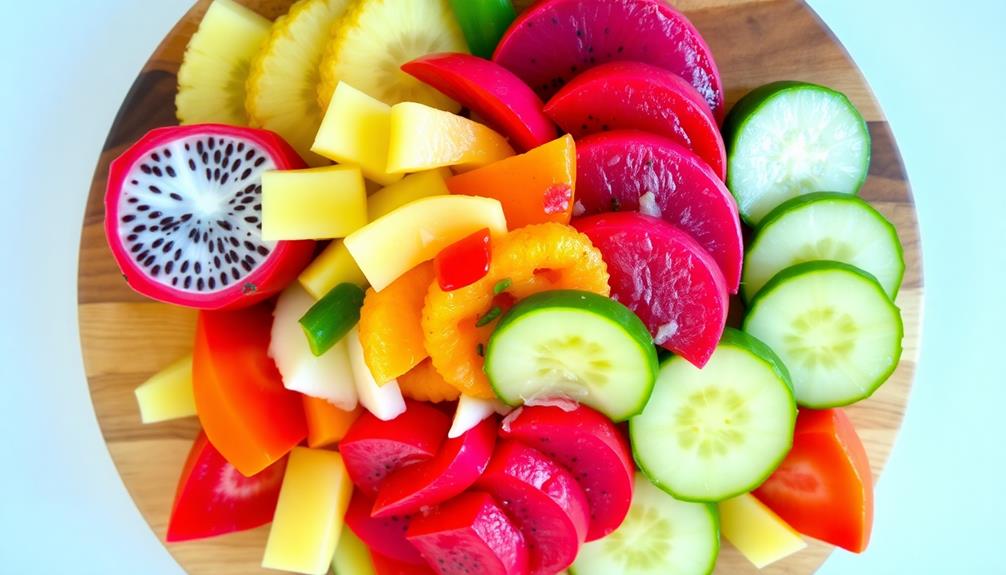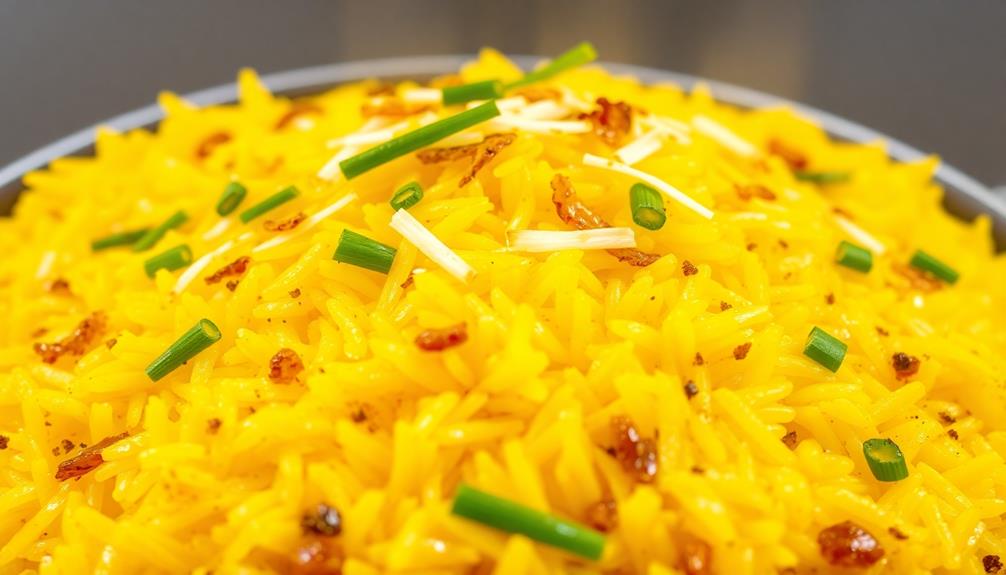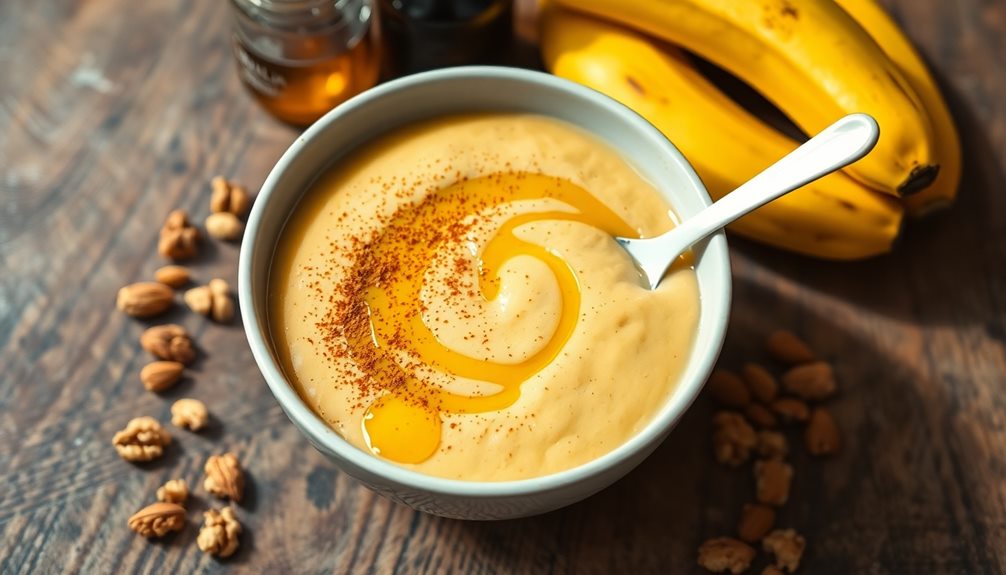Rujak, the captivating Indonesian fruit and vegetable salad, is a vibrant and refreshing culinary delight that's enjoyed by all. Originating from ancient Javanese roots, this beloved dish brings people together, whether at bustling street markets or festive gatherings. Prepare to be enchanted by the harmonious blend of sweet, sour, and spicy flavors, complemented by the contrasting textures of young mangoes, crisp pineapple, and crunchy vegetables. The colorful presentation and nutritious ingredients make Rujak a true celebration of Indonesia's diverse culinary heritage. And if you keep reading, you'll discover even more about this captivating salad.
Key Takeaways
- Rujak is a traditional Indonesian salad made with a mix of fruits and vegetables, known for its vibrant flavors, refreshing qualities, and contrasting textures.
- The dish has its origins in the ancient Javanese kingdom and has been enjoyed by both royalty and commoners, reflecting its cultural significance in Indonesia.
- Common ingredients in rujak include young green mangoes, unripe pineapple, jicama, cucumber, and bean sprouts, dressed with a sweet, sour, and spicy sauce.
- Rujak is often served chilled or at room temperature, and is frequently enjoyed as a refreshing snack or appetizer, especially during hot weather.
- The dish represents a culinary fusion of flavors, showcasing the creativity and diversity of Indonesian cuisine, and is an integral part of the country's culinary landscape.
History
Originating in Indonesia, rujak has been a beloved fruit and vegetable salad for generations. This colorful and flavorful dish is a true taste of the country's vibrant culinary heritage.
Rujak's origins can be traced back to the ancient Javanese kingdom, where it was enjoyed by royalty and commoners alike. Over the centuries, the recipe has evolved, with different regions developing their own unique variations, each reflecting the local produce and spices.
Today, rujak remains a beloved street food and home-cooked treat across the Indonesian archipelago. It's a delightful blend of sweet, sour, and spicy flavors, with a satisfying crunch from the fresh fruits and vegetables.
Indulging in a plate of rujak is a cherished cultural experience, bringing people together to share in the joy of this delicious and nutritious dish. Whether enjoyed as a snack or a side, rujak continues to be an integral part of Indonesia's vibrant culinary landscape.
Recipe
Rujak is a popular Indonesian fruit and vegetable salad, featuring a unique blend of sweet, sour, and spicy flavors. This dish originates from the island of Java and is commonly enjoyed as a refreshing snack or side during hot weather. The combination of fresh produce and a tangy, pungent dressing makes Rujak a true delight for the senses.
The key to a delicious Rujak lies in the careful selection and preparation of the ingredients. By carefully balancing the various textures and flavors, you can create a harmonious and satisfying dish that will delight your taste buds.
Ingredients:
- 2 young green mangoes, peeled and sliced
- 1 cup unripe pineapple, sliced
- 1 cup jicama, peeled and sliced
- 1 cup cucumber, peeled and sliced
- 1 cup bean sprouts
- 1/2 cup shredded cabbage
- 2 tablespoons roasted peanuts, crushed
- 2 tablespoons fried shallots
Dressing:
- 2 tablespoons palm sugar, grated
- 2 tablespoons tamarind paste
- 1 tablespoon chili paste
- 1 teaspoon salt
- 2 tablespoons water
In a large bowl, combine the sliced mangoes, pineapple, jicama, cucumber, bean sprouts, and shredded cabbage. In a separate small bowl, whisk together the palm sugar, tamarind paste, chili paste, salt, and water to make the dressing.
Pour the dressing over the fruit and vegetable mixture, and gently toss to coat evenly. Sprinkle the crushed roasted peanuts and fried shallots over the top.
To ensure the best flavor and texture, it's important to use a combination of unripe and slightly firm fruits and vegetables. The contrast between the crunchy produce and the tangy, sweet dressing is what makes Rujak so unique and delightful.
Serve Rujak chilled or at room temperature, and enjoy the refreshing and vibrant flavors of this Indonesian specialty.
Cooking Steps
Gather your chopped fruits and veggies, then toss them all together in a big bowl.
Drizzle the sweet-and-sour sauce over the top, making sure every bite is coated.
Pop the salad in the fridge to chill for a bit, then grab some chopped peanuts to sprinkle on as a tasty finishing touch.
Step 1. Prepare and Slice Ingredients

To begin, wash and prepare the ingredients for your rujak. Start by slicing the cucumbers, pineapples, and star fruits into thin, even pieces. This will help them absorb the delicious dressing more easily.
Next, cut the rambutan and mangoes into bite-sized chunks, being careful not to make them too small. For the jicama, peel the skin and slice it into thin, crunchy matchsticks.
Lastly, gently tear the young papaya leaves into manageable pieces. Remember to handle the chilies with care, as they can be quite spicy! Slice them thinly and set them aside.
With all your ingredients prepped, you're now ready to start assembling your vibrant and flavorful rujak salad. Take your time arranging the colorful produce, ensuring each element is evenly distributed. This step is crucial for creating a visually stunning and well-balanced dish.
Step 2. Mix All Ingredients

In a large mixing bowl, toss together all the sliced and chopped ingredients. The crunchy pineapple, juicy mango, and crisp cucumber will create a delightful blend of flavors and textures.
Sprinkle in the shredded cabbage and carrot, adding vibrant pops of color to the mix. Don't forget the savory roasted peanuts, which will provide a satisfying crunch.
Next, drizzle the tangy lime juice and sweet palm sugar dressing over the salad. Gently toss everything together until the ingredients are evenly coated.
The bright, zesty flavors will awaken your taste buds and make your mouth water in anticipation.
Step 3. Drizzle With Sweet-Sour Sauce

The sweet-sour sauce brings the salad together, so don't skimp on this important step.
First, gather your ingredients – you'll need palm sugar, lime juice, water, and a pinch of salt. In a small bowl, mix the palm sugar and lime juice until the sugar dissolves.
Then, add a splash of water and the salt, stirring well to combine.
Taste the sauce, and adjust the flavors as needed. You want a perfect balance of sweet and sour. If it's too tart, add a bit more palm sugar. If it's too sweet, squeeze in some extra lime juice. Keep tasting and tweaking until you've got that delightful, tangy-sweet flavor.
Once your sauce is ready, drizzle it generously over the fruit and vegetable salad.
Use a spoon to gently toss everything together, ensuring each bite is coated in the delicious dressing. The cool, crunchy produce paired with the punchy sauce is an absolute delight for your taste buds.
Step 4. Chill and Serve Immediately

Once you've drizzled the sweet-sour sauce over the rujak, it's time to chill and serve the dish immediately. The cool, refreshing flavors will tantalize your taste buds as you dig in. Chilling the rujak ensures the fruits and vegetables maintain their crisp textures, while the zesty sauce remains the perfect complement.
Don't wait too long – the rujak is best enjoyed right away. Gather your friends and family and place the vibrant, colorful plate on the table. The blend of sweet, sour, and savory notes will have everyone reaching for seconds.
The crunchy pineapple, juicy mangoes, and crisp vegetables create a wonderful contrast in every bite. Serve the rujak as a light and healthy appetizer or side dish. It's a delightful way to cool down on a warm day. If you’re feeling more adventurous, you can also add a few pieces of durian fruit to the rujak for a unique and bold flavor. In fact, there are many delicious durian fruit recipes that incorporate this notoriously pungent fruit in creative ways. Whether you’re a durian enthusiast or trying it for the first time, adding it to your rujak is sure to be a memorable experience.
The refreshing, balanced flavors make it an irresistible treat that's sure to leave you feeling satisfied and energized.
Step 5. Garnish With Chopped Peanuts

To finish off the rujak, sprinkle some chopped peanuts over the top. This extra crunch is the perfect finishing touch to the vibrant salad.
The peanuts don't just add texture, but they also complement the sweet and tangy flavors beautifully. Be generous with the peanuts – you'll want a nice coating over the entire dish.
Chopping the peanuts into smaller pieces ensures they distribute evenly and you get that satisfying nutty bite in every forkful. The peanuts bring an earthy, roasted undertone that ties the whole rujak together.
Garnishing with the peanuts is the final step, so get ready to dig in and enjoy your masterpiece! The combination of juicy fruits, crunchy vegetables, and now the irresistible peanuts makes this rujak an absolute delight.
Serve it immediately and watch your family or guests' faces light up as they savor every delicious morsel.
Final Thoughts
Ultimately, Rujak is a vibrant, flavorful dish that encapsulates the rich culinary traditions of Indonesia. This unique salad showcases an incredible blend of sweet, sour, and spicy flavors, making it a true delight for the senses.
From the refreshing crunch of raw fruits and vegetables to the tangy, pungent dressing, every bite is a journey of discovery. As you savor each component, you'll find yourself transported to the bustling street markets of Indonesia, where the aroma of Rujak fills the air.
The contrasting textures and bold flavors come together in a harmonious symphony, leaving you craving more with every forkful.
Whether you're a seasoned adventurer or new to the world of Indonesian cuisine, Rujak is a must-try dish that will undoubtedly leave a lasting impression. Dive in and experience the vibrant, invigorating taste of this beloved culinary treasure.
Frequently Asked Questions
What Are the Health Benefits of Eating Rujak?
Eating a fruit and vegetable salad can provide you with essential vitamins, minerals, and antioxidants that boost your immune system, aid digestion, and promote overall health. It's a nutritious and delicious way to nourish your body.
Can Rujak Be Made Ahead of Time?
Yes, you can make rujak ahead of time, but it's best served fresh. The vegetables may become soggy and lose their crunch if prepared too far in advance. For the best texture and flavor, assemble and serve your rujak right before enjoying it.
How Long Does Rujak Last in the Fridge?
You can keep the prepared salad in the fridge for up to 3 days. However, the fruits and vegetables may start to lose their crispness and flavor the longer it's stored. For best results, enjoy your rujak right away.
What Are the Common Substitutions for Rujak Ingredients?
You can substitute common ingredients like cucumber with zucchini, mango with papaya, and pineapple with melon. Tamarind paste can be replaced with lime juice, and shrimp paste with fish sauce. Get creative with what's available!
Can I Make Rujak With Canned Fruits and Vegetables?
You can certainly make a salad with canned fruits and vegetables, but it won't be the same as using fresh produce. The flavors and textures won't be as vibrant, and the overall dish won't be as authentic.










